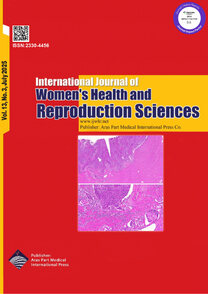| Review | |
| The Value of Ophthalmic Artery Doppler Parameters as a Predictive Tool in Preeclamptic Patients: A Systematic Review and Meta-analysis of Diagnostic Test Accuracy | |
| I Wayan Agus Surya Pradnyana1, Endang Sri Widiyanti2, I Gde Arie Kusuma Wijaya3, Made Favian Budi Gunawan1, I Gusti Ayu Cintya Paramyta1, Ni Nengah Devianti Wulan Pradnyani1 | |
| 1Faculty of Medicine, Udayana University, Prof. dr. I.G.N.G Ngoerah General Hospital, Denpasar, Bali, Indonesia 2Maternal Fetal Medicine Division, Department of Obstetrics and Gynecology, Udayana University, Prof. dr. I.G.N.G Ngoerah General Hospital, Denpasar, Bali, Indonesia 3Faculty of Medicine, Ganesha University, Buleleng General Hospital, Singaraja, Bali, Indonesia |
|
|
IJWHR 2025; 13: 096-114 DOI: 10.15296/ijwhr.2025.8854 Viewed : 437 times Downloaded : 464 times. Keywords : Ophthalmic artery, Diagnosis, Doppler, Preeclampsia, Accuracy |
|
| Full Text(PDF) | Related Articles | |
| Abstract | |
Objectives: Early detection of preeclampsia (PE) is crucial to prevent severe maternal and fetal complications. Ophthalmic artery Doppler (OAD) presents a viable and non-invasive placenta-independent approach, especially in low-resource settings. This study aims to evaluate the diagnostic accuracy of OAD parameters and address the lack of standardized protocols and comparative analyses with other biomarkers. Methods: This study followed PRISMA guidelines. Data on peak ratio (PR), resistance index (RI), and pulsatility index (PI) were extracted from studies comparing PE and normotensive pregnancies. Bivariate models were used for summary ROC curves to estimate pooled sensitivity, specificity, diagnostic odds ratio (DOR), and area under the curve (AUC). All analyses were performed using R Studio. Results: Seventeen studies involving 2699 pregnant women were included. The PR showed a pooled sensitivity of 0.80 (95% CI 0.66–0.89, I² = 0.0%), specificity of 0.92 (95% CI 0.80–0.97, I² = 91.0%), DOR of 48.85 (95% CI 12.79–186.53, I² = 50.5%, P < 0.001), and AUC of 0.911. The RI showed a pooled sensitivity of 0.76 (95% CI 0.68–0.82, I² = 0%), specificity of 0.76 (95% CI 0.57–0.88, I² = 93.2%), DOR of 11.14 (95% CI 6.01–20.64, I² = 35.6%, P < 0.001), and AUC of 0.774. The PI showed a pooled sensitivity of 0.69 (95% CI 0.58–0.78, I² = 75.2%), specificity of 0.86 (95% CI 0.64–0.96, I² = 88.2%), DOR of 12.89 (95% CI 5.40–30.78, I² = 85.2%, P< 0.001), and AUC of 0.768. The pooled analysis of PR, PI, and RI showed that the PE group had MDs of -0.21 (95% CI -0.21; -0.02), -0.36 (95% CI -0.56; -0.15), and -0.06 (95% CI -0.08; -0.03), respectively. Conclusions: The OAD, particularly the PR parameter, demonstrates high diagnostic accuracy, strong sensitivity, and specificity for identifying PE. |
Cite By, Google Scholar
Google Scholar
PubMed
Online Submission System
 IJWHR ENDNOTE ® Style
IJWHR ENDNOTE ® Style
 Tutorials
Tutorials
 Publication Charge
Women's Reproductive Health Research Center
About Journal
Publication Charge
Women's Reproductive Health Research Center
About Journal
Aras Part Medical International Press Editor-in-Chief
Arash Khaki
Mertihan Kurdoglu Deputy Editor
Zafer Akan






















